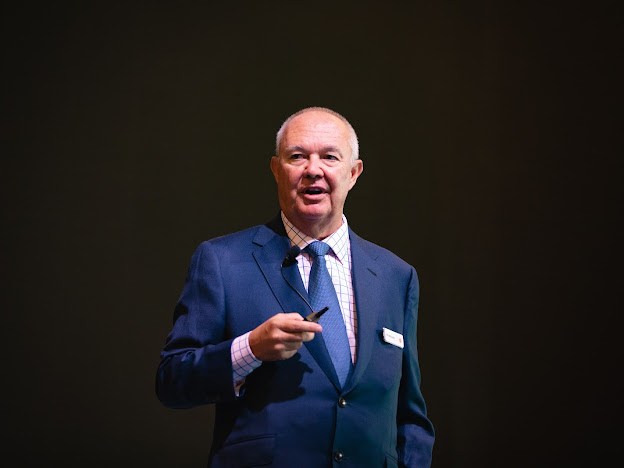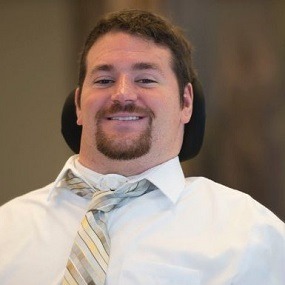|
|||||||||||||||||||||||||||||||||||||||||||||||||||||||||||||||||||||||||||||||||||||||||||||||||||
Indiana State Museum Spring Break Camps Are Open for Registration!
EPD DAILY ACTIVITY REPORT
FOOTNOTE: EPD DAILY ACTIVITY REPORT information was provided by the EPD and posted by the City-County-County Observer without opinion, bias, or editing.
HOT JOBS
|
||||||||||||||||||||||||||||||||||||||||||||||||||||||
THUNDERBOLTS TRAVEL TO PEORIA THIS WEEKEND FOR PAIR OF GAMES
- Peoria Rivermen:
- Record: 18-4-4, 40 Points, 2nd Place
- Leading Goal Scorer: Jordan Ernst (21 Goals)
- Leading Point Scorer: Alec Baer (40 Points)
- Primary Goaltender: Colby Muise (16-2-3, .930 Save %)
- Thunderbolts Record vs PEO: 1-4-1
UE Men’s basketball drops contest at UNI
Men’s basketball drops contest at UNI
Aces back home on Saturday to face Belmont
CEDAR FALLS, Iowa – Four Northern Iowa players reached double figures on Tuesday as the Panthers finished with a 73-56 victory over the University of Evansville men’s basketball team inside the McLeod Center.
UE was led by Tayshawn Comer’s 18 points. He added 7 boards and 4 steals. Cam Haffner finished with 13 points while leading the Purple Aces with 8 caroms. Tytan Anderson tallied 15 points for UNI while Ben Schweiger chipped in a double-double, wrapping the day up with 10 points and 12 boards.
“We missed a lot of easy shots around the rim and picked up several undisciplined fouls,” UE head coach David Ragland said. “It will be good for us to get back home, be on a normal schedule, and be able to work on things in practice.”
Josh Hughes got the Aces on the board with an early 2-0 lead as both offenses struggled in the early moments. Following a 1-for-6 start from the field, UNI held a 5-3 lead six minutes in. Evansville started 1-for-7 with three turnovers before Tayshawn Comer converted a 3-point play to return the lead to UE at 7-5.
Comer quickly struck again on the next Aces possession. Following a 3-point make by UNI, Comer hit from outside to put Evansville back in front at 10-8 inside of the 13-minute mark. Over the next 10 minutes, Northern Iowa made its move, outscoring UE by a 19-2 margin to go up 27-12. The offense for UE struggled over that time frame, going 1-for-13 from the field with three turnovers.
Connor Turnbull ended the stretch with a basket as the Aces cut into the deficit over the final minutes, trailing by 14 at the half – 32-18. Evansville shot 22.2% in the half while turning it over eight times.
It was Turnbull opening the second-half scoring, turning the feed from Tanner Cuff into a dunk, but the Panthers quickly got back on track, opening up their largest lead of 19 points. A free throw by UNI established a 43-24 advantage inside of 15 minutes remaining. Evansville did not give up as Cam Haffner’s triple two minutes later got his squad within 14 points at 45-31.
With 7:01 remaining, a field goal from Comer got the Aces even closer at 53-40. The tides quickly turned back in UNI’s favor as they responded with a 9-1 stretch to take their largest lead of 21 points. Their lead grew to 23 before Evansville closed to make it a final of 73-56. UNI shot 40.7% while holding the Aces to 36.4%. After scoring 18 in the first half, UE erupted for 38 points in the second half while shooting 50% in the final 20 minutes.
Following the road trip, UE is back home for its next two games, beginning on Saturday with a 1 p.m. game against Belmont inside the Ford Center.
-www.GoPurpleAces.com-
BREAKING NEWS: EVSC Superintendent David Smith Announces Retirement
Joe Wallace: The Rise and Fall of Fact Checkers
The Rise and Fall of Fact Checkers
 by Joe Wallace
by Joe Wallace
City-County Observer Columnist
Over the past decade, the concept of “fact-checking” has evolved from a noble endeavor to a divisive practice, often viewed through a lens of political bias and censorship. Initially designed to combat misinformation in an era of rapid digital communication, fact-checkers were heralded as guardians of truth. However, allegations of selective enforcement, political partiality, and an increasingly fragmented media landscape have tarnished their reputation, culminating in Meta’s recent decision to cease its use of third-party fact-checkers on its platforms. Personally, I recall one of my professors in a marketing class explicitly stating that “all facts are negotiable” which sort of implies that there are no hard facts.
The Origins of Fact-Checking
Fact-checking has long been a staple of responsible journalism. Traditionally, it involved verifying claims made by public figures, media outlets, and organizations to maintain accuracy and public trust. The rise of social media, however, introduced a new urgency. Platforms like Facebook and Twitter became breeding grounds for viral misinformation, from election conspiracies to health-related falsehoods. In response, tech companies partnered with independent fact-checking organizations to flag, downrank, or label disputed content.
This initiative gained momentum during the 2016 U.S. presidential election, when “fake news” entered the public lexicon. Stories with little basis in reality spread like wildfire, influencing public opinion and undermining democratic processes. Fact-checking, backed by algorithms and user reports, seemed a logical solution to counteract this trend.
The Backlash
Despite its good intentions, fact-checking soon became a lightning rod for controversy. Critics argued that the practice was inherently subjective, as determining what constituted “misinformation” often depended on the political and cultural lens of the fact-checkers themselves. Accusations of bias were rampant, with conservatives in particular claiming that platforms disproportionately targeted right-leaning content. Conversely, liberals accused fact-checkers of not doing enough to curb the spread of disinformation.
Another contentious issue was the role of tech giants like Meta in policing speech. Opponents contended that labeling content as “false” or “misleading” equated to censorship, chilling free expression. High-profile instances of fact-checking errors further eroded trust, as legitimate dissenting opinions were sometimes swept into the same category as outright fabrications.
The COVID-19 pandemic added fuel to the fire. Disputes over evolving scientific guidance, vaccine efficacy, and public health mandates highlighted the challenges of fact-checking in real-time. Critics argued that suppressing dissenting viewpoints—even if later proven correct—damaged public trust in both the platforms and the fact-checking process itself.
Meta’s Pivot
In late 2024, Meta quietly announced it would phase out its reliance on third-party fact-checkers. While the company cited a shift toward broader content moderation strategies, the decision underscored the waning effectiveness and mounting controversy surrounding fact-checking initiatives. Instead of employing external validators, Meta plans to focus on user-empowered tools, enhanced AI detection systems, and clearer labeling of potentially harmful content without passing explicit judgment on its veracity.
Meta’s move reflects a broader trend: the realization that fact-checking, as it has been implemented, may not be the panacea for misinformation. The decision has been met with mixed reactions. Free speech advocates welcomed the change as a step toward less intrusive content moderation. Others worry that without rigorous fact-checking, misinformation could once again proliferate unchecked.
Lessons Learned
The rise and fall of fact-checkers offers several takeaways:
- Complexity of Truth: In a pluralistic society, truth is often contested. Efforts to label content as “false” or “true” can oversimplify nuanced debates and alienate audiences.
- Trust Erosion: Fact-checkers’ perceived biases have contributed to the erosion of trust in media and tech platforms. A more transparent and inclusive approach is needed to rebuild credibility.
- Role of Individuals: Ultimately, combating misinformation requires equipping users with critical thinking skills. Media literacy programs may be more effective in fostering informed discourse than top-down interventions.
Conclusion
Fact-checking was a well-intentioned attempt to address a genuine problem, but its execution left much to be desired. Meta’s recent decision marks the end of an era and prompts a reevaluation of how societies combat misinformation. As technology continues to evolve, the focus must shift toward empowering individuals to discern truth for themselves, ensuring that the pursuit of accuracy does not come at the expense of open dialogue.
Ben Trockman becomes Evansville City Council President
Ben Trockman becomes Evansville City Council President
The Evansville City Council and returning Council Member Ben Trockman will made history at the Council’s first meeting of 2025. As their first order of business, Council members are expected to elect Trockman as this year’s City Council President.
Ben will also be serving his second four-year term on the City Council representing Evansville’s First Ward. The nine elected members of the Council form the legislative and fiscal body for city government.
Trockman, an Evansville native, was still in high school in 2006 when a motocross accident caused a severe spinal cord injury, resulting in quadriplegia. After that life-altering experience and extensive rehabilitation, Ben went on to graduate from Harrison High School and University of Southern Indiana. He continues to have successful careers in the private sector as well as local government.
A wide range of programs at the Easterseals Rehabilitation Center in Evansville have been instrumental to Trockman’s success and to his career path.Easterseals medical rehabilitation therapies, assistive technology, and rehab engineering services have all played a role in Ben’s pursuit of his goals. He chose to give back to the nonprofit organization by serving as local Easterseals Ambassador in 2010 and National Easterseals Ambassador two years later.
“There is no doubt that my experience as an Easterseals Ambassador helped me find my voice and motivate me to be involved in city government and become an active citizen in this great city that we all call home,” Trockman said.
“At the young age of 24, while traveling the country on behalf of Easterseals, I saw and experienced the unnecessary challenges people with disabilities face just living in their communities. With several trips to Washington DC, I also learned about Easterseals’ advocacy process and witness the strategy and heavy lifting it takes to pass better legislation to improve access and opportunities for people with disabilities.”
In November 2019, Ben was elected to his first role in community government as the First Ward City Councilman for Evansville, Indiana, the first quadriplegic to ever hold the office. He led an effort for a Complete Streets Ordinance , making the Evansville roadways more accessible for residents, no matter the mode of transportation. Ben has received countless awards and accolades for his leadership. He is also a Senior Consultant at Change for Balance, a strategic communication agency on a life-long journey to change this world for the better. He has built his career in communications and has become a leading voice and advocate for diversity and inclusion.












